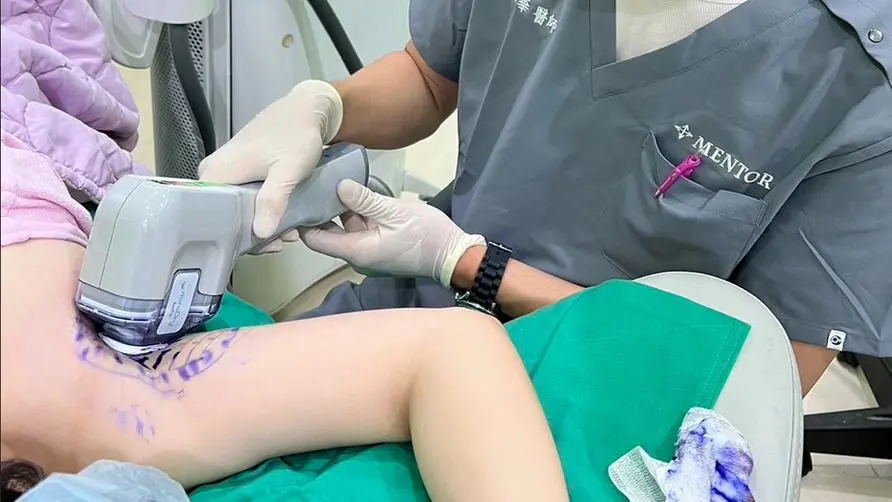Are there few treatment options for chronic lymphocytic leukemia? If "this gene" mutates, life-saving opportunities may be missed.

Chronic lymphocytic leukemia has fewer treatment options? “1 gene” mutation may miss life-saving opportunities
If you suffer from the rare “chronic lymphocytic leukemia”, not only are there fewer first-line treatment options; if you have congenital genetic chromosomal defects, high-risk groups are more likely to miss critical life-saving opportunities? Fortunately, a new generation of oral targeted drug are included in health insurance for the first time, which can effectively prolong survival, which is even more powerful for leukemia patients.
Jim Lai, CEO of the Taiwan Cancer Foundation, explained that “blood cancers” can be divided into three main categories: blood cancer (leukemia), lymphoma, and multiple myeloma, which are further subdivided into multiple categories. The classifications are complex and difficult for the public to distinguish. Chronic lymphocytic leukemia (CLL), among the blood cancers, is more likely to occur in people with silver hair over the age of 60. It has no obvious symptoms in the early stages, and the symptoms are easily confused with aging and are ignored, so it is called the “silent killer”.
Traditional CLL treatment first line only has “chemotherapy” as an option. However, there is a rare high-risk group among CLL patients: “chromosome 17p defect”, which only accounts for nearly 10% of the total patients (about 5%-9%). In traditional treatment, it faces two major difficulties: first, it does not respond well to chemotherapy; second, its prognosis is that it is difficult to treat among CLL patients. Such a treatment structure not only fails to be in line with international treatment guidelines, but also results in patients in this high-risk group having to go through early treatment failures before they have the opportunity to choose targeted therapy in the later stages.
Fortunately, good news came in July this year. The new generation of oral target drugs “BTK inhibitors” were first paid by health insurance. As a first-line drug for high-risk groups of chronic lymphocytic leukemia (chromosome 17p defect), more patients from high-risk groups can benefit from it. Hui, renovate the treatment.
Chronic lymphocytic leukemia is most commonly “asymptomatic”! Weight loss and weakness in the elderly may not be due to aging
Chronic lymphocytic leukemia (CLL) is the most common leukemia in European and American countries, but its incidence in Asia is very low. According to the 2020 cancer registration report of the National Health Service, there are 241 CLL patients, accounting for about 9% of the number of leukemias. Even though the number of patients is relatively small, it does tend to increase slowly year by year. Most patients have no symptoms in the early stage and are diagnosed due to high white blood cells during health examinations. The 7 most common symptoms of CLL include:
Unexplained weight loss (more than 10% loss within half a year)
Recurrent fever of unknown origin
Night sweats
Swollen lymph nodes
General fatigue
Loss of appetite
General fatigue
Due to atypical symptoms, it is often mistaken for “aging” and treatment is delayed. Dr. Yao Ming, director of the Hematology Society of Taiwan, said that for high-risk patients with chronic lymphocytic leukemia, the only possible cure is allogeneic hematopoietic stem cell transplantation. However, most patients are 60-70 years old when diagnosed, and more than 90% have complications. For patients with more than one comorbid disease, the body cannot bear the transplant treatment with severe side effects. Therefore, the treatment is based on “regular follow-up for asymptomatic patients; interventional treatment for symptomatic patients”, with the main goal of maintaining the patient’s quality of life and prolonging the patient’s survival. .
Chromosome 17p defect responds poorly to chemotherapy International treatment guidelines: Targeted therapy should be used in the first line
“Gene variation” is an important prognostic factor for chronic lymphocytic leukemia, which can be used to evaluate whether the patient responds well to treatment, the course of the disease, and the ease of treatment. The genetic expression of CLL varies greatly among patients, with dozens of genetic mutations. Among them, patients with chromosome 17p defects usually develop symptoms earlier and have the worst prognosis.
The traditional treatment of CLL is mainly based on chemotherapy. Although targeted drugs have been added in recent years, the timing of their use is still regulated. Only after the failure of chemotherapy and monoclonal antibodies, there is an opportunity to use targeted drugs in the later line. drug. Since most of the patients are middle-aged and elderly, the severe side effects caused by chemotherapy, such as nausea, vomiting, dizziness, etc., often make it difficult for patients to continue to receive treatment.
Dr. Cai Chenghong, Secretary-General of the Taiwan Society of Blood and Marrow Transplantation, explained that because patients with chromosome 17p defects do not respond well to chemotherapy, studies have shown that about 10% of patients in Taiwan have chromosome 17p defects, and the median survival time is only 3-4 years, which is significant. Lower than patients without genetic mutations, and this result is also related to the treatment options available in the past. Therefore, the NCCN Guidelines recommend that patients with chromosome 17p defects should be treated with targeted drugs in the first line.
Dr. Cai Chenghong added that in the past, first-line treatment options were limited, and patients needed to undergo chemotherapy first, but in fact the response was poor, causing patients to miss the opportunity for treatment!
A new generation of oral targets are included in health insurance! Effectively prolong patient survival
In recent years, new targeted drugs have been released one after another, providing more diverse treatment options for cancer patients. Recently, front-line treatment for blood cancer patients has ushered in a dawn. Taiwan’s chronic lymphocytic leukemia treatment has also taken a big step forward, integrating with the trend of international treatment guidelines. Not only has the new generation of oral targeted BTK inhibitors been included in health insurance benefits, as chronic lymphocytic leukemia It is a first-line drug for high-risk groups (17p chromosome defect); in addition, it has become a second-line health insurance-paid drug for patients with refractory/relapsed mantle cell lymphoma (rrMCL).
Dr. Cai Chenghong emphasized that compared with traditional treatments, the new generation of oral targeted BTK inhibitors can significantly improve patient survival rates, are safer, and can also reduce side effects such as atrial fibrillation, hypertension, and bleeding, further improving patients’ quality of life. In particular, the inclusion of health insurance benefits as a first-line drug will also prevent high-risk CLL patients from taking the wrong path, avoid unnecessary chemotherapy, and help patients regain their wonderful lives.
Further reading:





